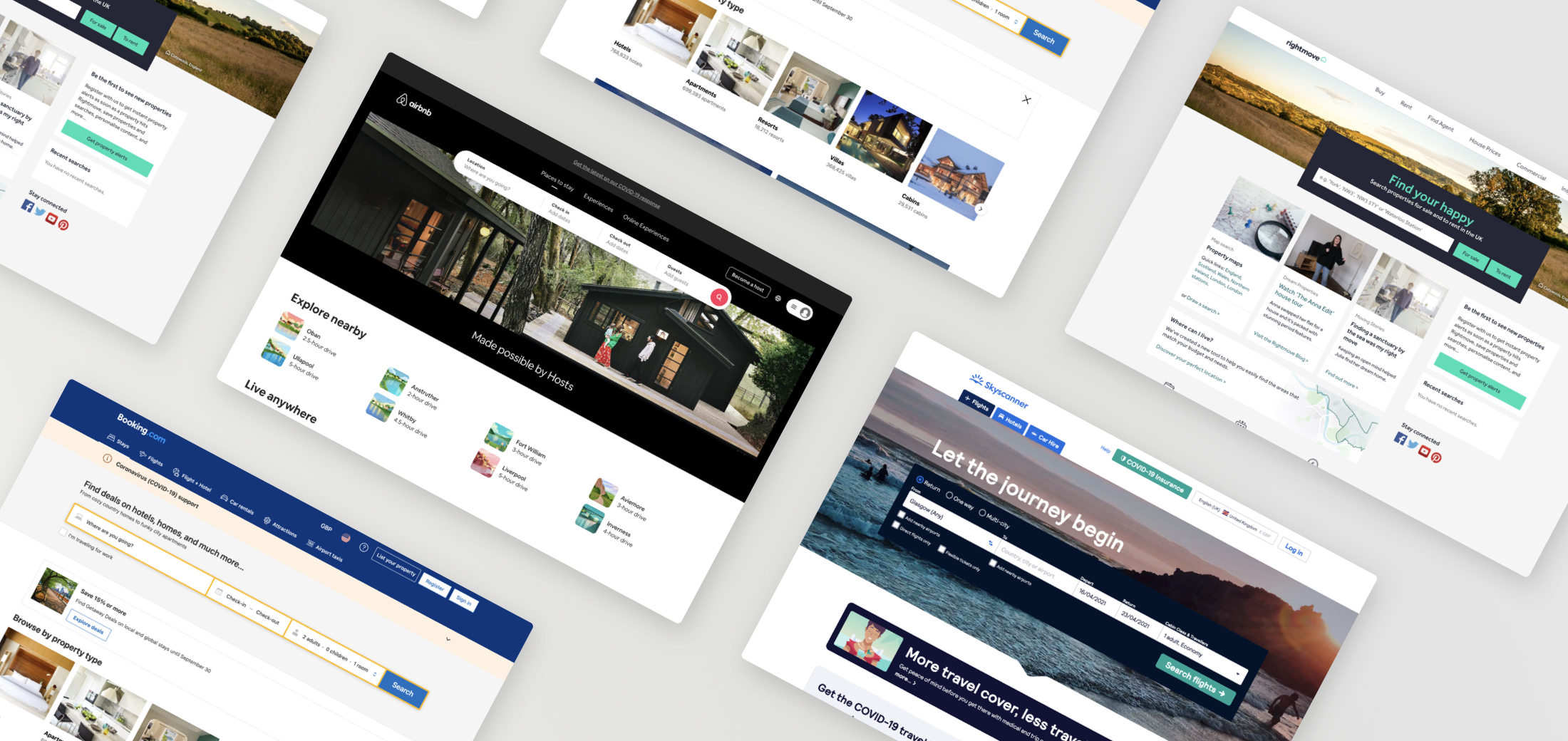Search Redesign
Role: UX/UI Design
Link: arnoldclark.com
The Arnold Clark homepage had served as a starting point for thousands of customers each month looking for a new car. The search mechanic had remained largely unchanged for several years and was looking and feeling dated compared to similar search products on the market. Furthermore, there were several aspects of the design which were underperforming and even proving to be a barrier to customers looking to find a new car.

Goals
There were several goals we wished to achieve with a redesign including:
- Bring Arnold Clark's home page search feature inline with other contemporary, industry leading, search products.
- Reduce how much information is required up front while still providing meaningful search results for prospective customers.
- Create a space which could be utilised for marketing campaigns and social proof.
Investigation
Throughout the project, we called upon a number of methods to analyse the existing solution and determine what we might do to improve the user experience. These included, analysing sales data and analytics as well as scenario based user testing and taking inspiration from industry leading companies.
Data analysis
The most crucial element of the redesign was establishing how much information was required from the user up-front to generate meaningful search results.
Analytical data showed that users most commonly interacted with the Make, Model and Price fields. In contrast, users engaged with the “Postcode”, “Distance” and “Cars with images only” fields infrequently. This was backed up in scenario based user testing where participants were often confused by why they were having to provide their postcode to see vehicles.
Additionally, insights from sales data helped us identify that the majority of sales stemmed from PCP and Hire Purchase finance deals. These insights led us to consider whether defaulting the search to “Monthly payments” instead of “Cash price” might yield more relevant results for users.
User testing
A number of scenario based user testing sessions were conducted with real Arnold Clark customers during branch visits. These tests asked customers to imagine a scenario where they had a set budget and to find a car that met their needs.
User testing helped us identify that while in the majority of cases, prospective customers did not know exactly which make and model of vehicle they were looking for; they did have a good idea of their budget. This was unknowingly proving to be a potentially costly issue for both the company and the prospective customer.
We found that the customers' budget often influenced which option they selected in the “Show me” field, with many opting to select “Used cars” thinking their budget would not allow for new or nearly-new vehicles. This unwittingly resulted in customers missing out on new (often better specced) vehicles as they believed they could not afford them.
Inspiration
Inspiration was gathered from a number of sources, chiefly, from companies who were (at the time) renowned for industry leading search products including: Airbnb, Skyscanner, Rightmove and Booking.com.

Proposal
Armed with a wealth of statistical information, user insights and industry inspiration, we could begin to envisage how the new Arnold Clark search would look and work. These changes included:
- Remove the “Show me” option which we believed was setting costly misconceptions.
- Change the default search from “cash price” to “pay monthly”.
- Replace the sluggish payment UI slider with “Minimum” and “Maximum” select options.
- Remove the confusing and infrequently used “Postcode”, “Distance”, and “Cars with images only” fields.
- Redesign the component to be more inline with industry leading examples.


Outcomes
The final proposal was subject to an A/B test to identify any significant statistical change in data such as:
- Results page visits from home page search.
- Results page filtering (were users actively engaging with some of the options which we had changed/removed from the original design?).
- Enquiry levels.
Over the course of the two week test period, the new design out-performed the control across the board. Increased number of visitors to the home page performed a search and fewer people were engaging with the price filter on the search results screen (changing it back to cash). Enquiry levels were also trending slightly above the control group although not by a statistically significant level.
Additionally, the redesigned header section was met with much enthusiasm from the marketing department who realised the potential to publicise ad campaigns in the new real estate.
